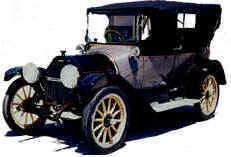One of the most important rules in a research laboratory is to always, always, always make sure that your materials have been cleaned properly before they are put away. If chemical residue is left over, not only will future experiments be contaminated, but the resulting mixture could be dangerous—even explosive depending on what chemicals you are using. Every researcher is taught from day one how to properly dispose of waste and clean their glassware. Yet mistakes always happen. And—luckily enough for us—one of these mistakes just happened to result in an invention that actually improved laboratory safety in a huge way.

In 1903, a French scientist, Edward Benedictus, was working in his laboratory when he needed to get certain chemicals from a high shelf. Grabbing his ladder, he climbed up to the top shelf, but accidentally knocked over a flask from a shelf below. Looking down at the broken glassware, Benedictus noticed something quite interesting—the glass had not completely shattered, as was to be expected. Instead, even though the glass was cracked and broken, it still retained its general shape. There were no glass shards scattered around the laboratory, and no sharp pieces of glass that could easily cut someone.
After some investigation about this curious phenomenon, the scientist learned that one of his assistants had been getting slightly lazy with cleaning his glassware, and had not completely removed the chemical inside. The solution—cellulose nitrate—was a liquid plastic which had evaporated and coated the interior of the flask with a thin film. This chemical prevented the glass from shattering, instead holding the pieces together.

At this time, when the development of the automobile was relatively new, Benedictus realized that this new material could greatly increase the safety of vehicles, as most car accidents resulted in the driver being harmed by shattered glass. Thus safety glass was developed, and since then it has been used in hundreds of different ways—from car windshields, to safety goggles, to chemical glassware. Without this lucky accident, the world may never have known the amazing properties of cellulose nitrate.
It is crazy how laziness can lead to scientific discovery and invention. This is one of those inventions that seems like someone directly worked to create this to make glass more safe. However, in reality, we just came upon this safety standard by mere accident.
Do you think the lab assistant was fired or given a share of the profits?
I always love this kind of stuff. It amazes me how many different technologies that we take for granted were discovered by mistake. Always a fan of these posts.